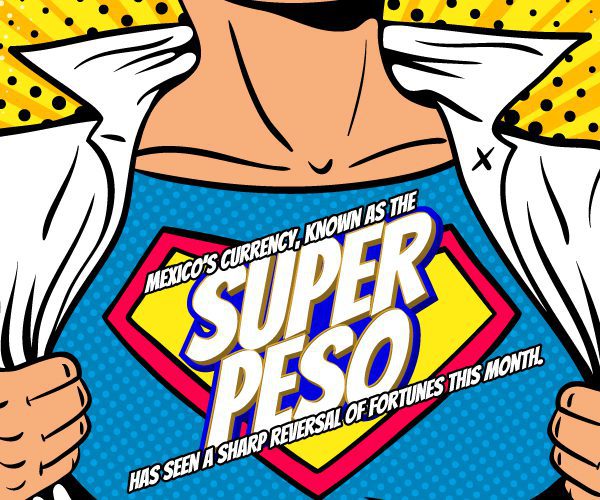
The appreciation of the peso was derived from multiple factors related to Mexican policy, such as government restrictions, spending contraction and not increasing debt during the most difficult period of Covid-19, as was the case with other countries. Added to this, are the profits obtained by companies and new investments in the automotive industry, which make the country more attractive for capital inflows.
Despite those positives, peso bulls see the outlook hinging on what happens north of the border. “Once the dust settles down, the peso should recover,” said Marco Oviedo, a senior fixed income strategist at XP Inc., Brazil’s largest brokerage. “The only real risk for the peso is some kind of Federal Reserve policy mistake or another shock to the global economy.”
During the 1980s, many Latin American countries were unable to service their foreign debt. This period is often referred to as the “lost decade”1. In Mexico, the crisis was caused by a combination of factors including the falling price of oil and mismanagement of natural resources23. The Mexican government had put oil as collateral for its debts, but when the price of oil began to fall worldwide, Mexico could not sustain its debts and entered into a crisis2. The crisis was one of the worst in Mexico’s history and caused a dramatic devaluation of the peso2. The dollar went from 12.50 to three thousand pesos2. Inflation also increased from 191% to 303%, 47 times more2. The external debt tripled, as did interest rates2. Mexican producers and households suffered2.
Crowded positioning can make the Super Peso vulnerable to a change in sentiment or fundamentals
When many investors hold similar positions in a currency, any shift in market sentiment or change in economic fundamentals can lead to a rapid unwinding of those positions, causing significant fluctuations in the currency’s value.
A surprise in carry, the US outperforming Mexico, a risk-off shock, and a reversal in positioning can all have significant impacts on the value of the Super Peso and its role in the global economy. Those are some important takeaways to consider when discussing the Super Peso and its relationship to the import and export market.
- Surprise in carry: Carry trades involve borrowing in a low-interest-rate currency and investing in a higher-yielding one. If there is an unexpected change in interest rate differentials between the Mexican Peso and another currency, it could affect the profitability of carry trades involving the Peso. This could lead to investors unwinding their carry trade positions, causing fluctuations in the value of the Peso.
- US outperforming Mexico: The economic performance of the US relative to Mexico can have a significant impact on the value of the Super Peso. If the US economy outperforms Mexico’s, it could lead to a stronger US dollar and a weaker Mexican Peso. This could negatively impact the value of the Peso and make it more volatile.
- Risk-off shock: A risk-off shock refers to a sudden shift in market sentiment towards aversion to risk. In the event of a risk-off shock, investors may move their money out of riskier assets such as emerging market currencies like the Mexican Peso, and into safer assets such as US Treasuries. This could lead to a decline in the value of the Peso and increased volatility.
- Reversal in positioning: If there is a reversal in positioning and investors who were previously bullish on the Mexican Peso suddenly become bearish and start selling their positions, it could lead to a rapid decline in the value of the Peso and increased volatility.
If there is an unexpected change in interest rate differentials, a stronger US economy relative to Mexico’s, a risk-off shock in the market, or a reversal in investor positioning, it could lead to increased volatility and fluctuations in the value of the Mexican Peso. These events could negatively impact the value of the Peso and make it more difficult to predict its future movements


